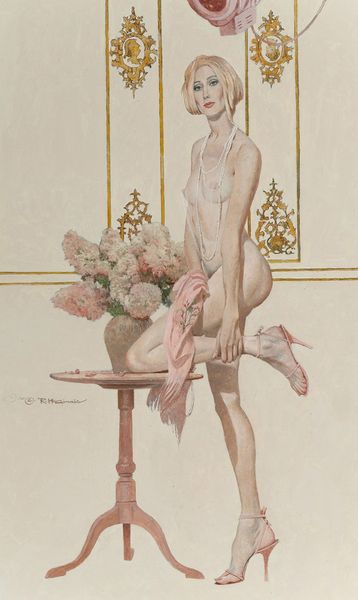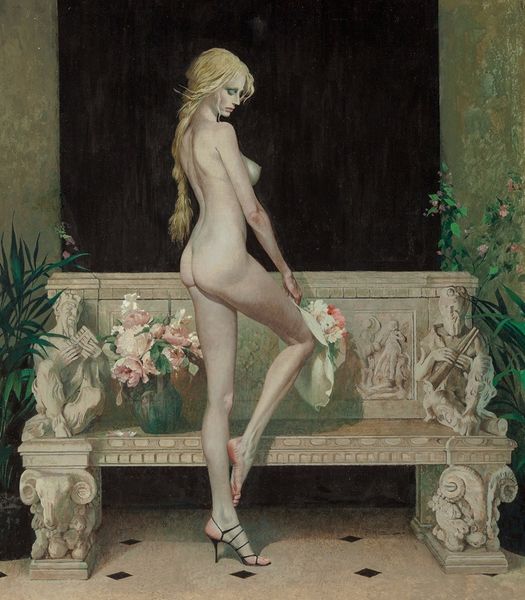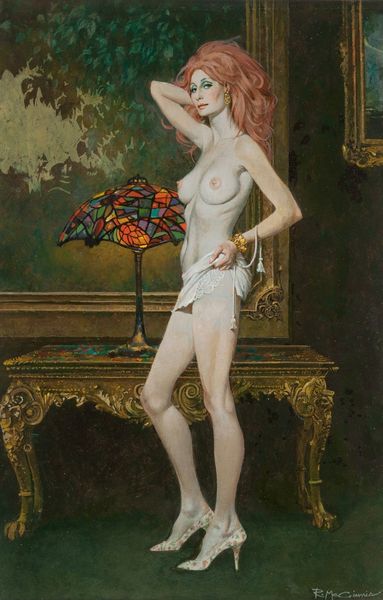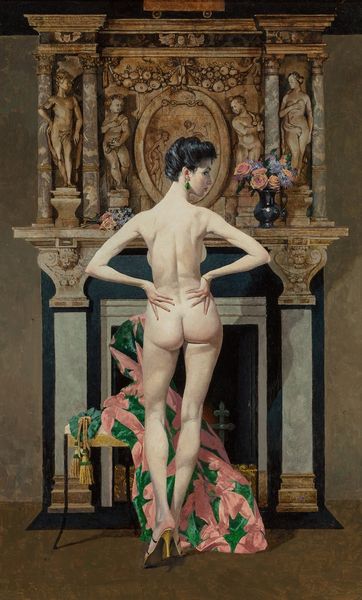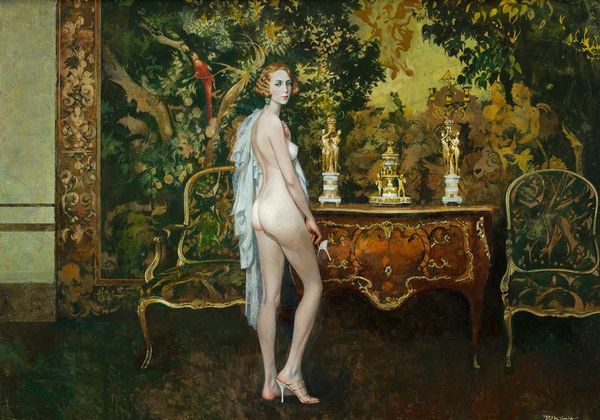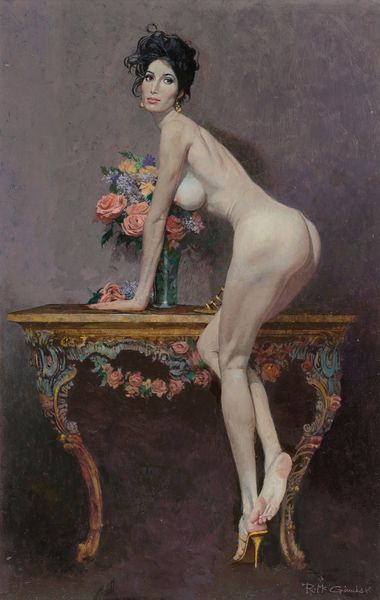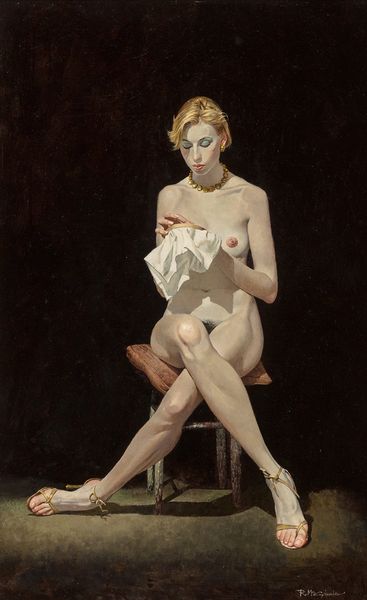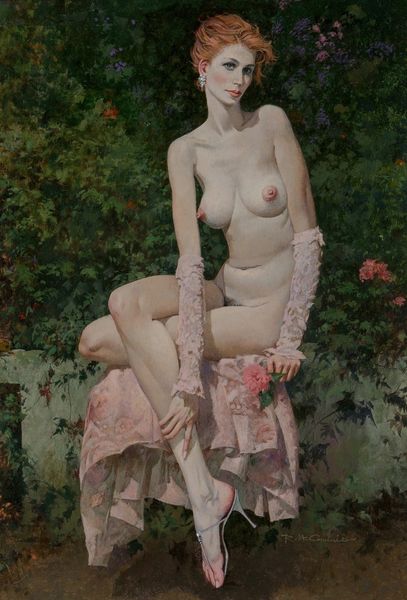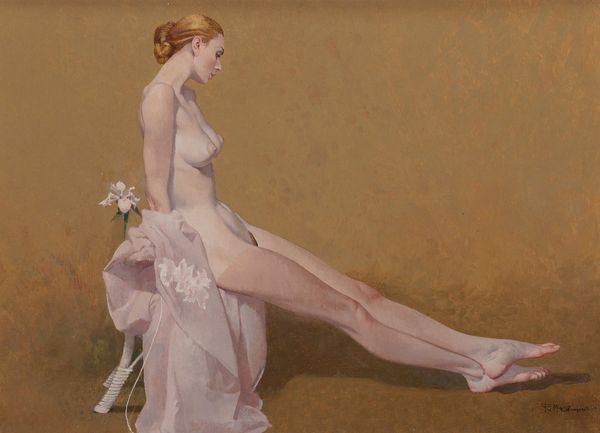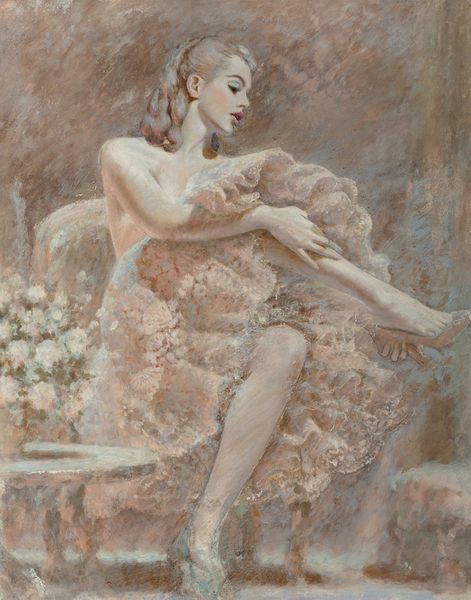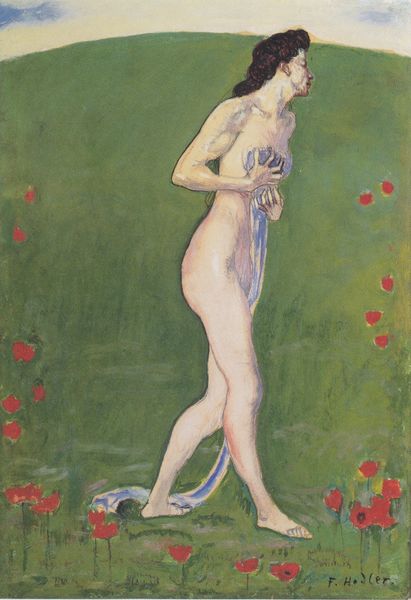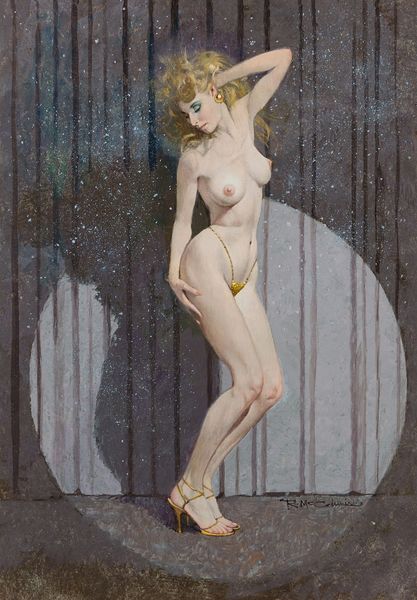
painting, oil-paint
#
portrait
#
figurative
#
painting
#
oil-paint
#
painted
#
figuration
#
nude
#
mixed media
#
realism
Copyright: Modern Artists: Artvee
Curator: What do you make of this painting; Robert McGinnis's “Rose Garland” from 2000? The medium appears to be oil. Editor: It has a dreamy, ethereal quality, almost as if she's a figure from a pre-Raphaelite painting who has somehow stumbled into the early 21st century. The muted palette contributes to that feeling. Curator: Yes, there is a conscious choice to connect her to something timeless and cyclical. Notice the titular roses—traditionally symbols of love, beauty, and secrecy. Their presence suggests layered interpretations of femininity, almost evoking Botticelli's Venus. Editor: Right. And consider the implications of a modern-day artist deliberately referencing such classical symbols. What does it mean to place the female nude within this historical framework, especially as perceived today? I wonder what he intends by the light and shadow, the tension between her bare skin and the drapery... Curator: That veil invites considerations of exposure versus concealment—very loaded when thinking about depictions of the female body. She isn’t explicitly revealed but remains partially shielded; consider, too, how rose garlands and veiled subjects commonly adorned religious art as emblems of purity, innocence, martyrdom. Editor: I appreciate the detail of the roses, of course, but I find it more impactful in its relationship to this figure; it calls into question notions of vulnerability, as well as of what has been kept secret or preserved in a particular time. The art evokes both nostalgia and reflection. Is there a longing for simpler depictions of sensuality and nature in contrast to more politically explicit artworks from the 2000s? Curator: Interesting! It shows how the past can be selectively curated for certain ideological leanings. What about those roses falling down the spine – like tears? Do these symbolize grief or pain associated with representations of women throughout the ages? The answer is always more complex when a symbol shifts depending on different art trends throughout history! Editor: Yes, I am now thinking it makes a case for historical context in reading feminine beauty. Anyway, “Rose Garland” encourages us to engage with evolving standards regarding the portrayal and gaze. Curator: For me, it reinforces how symbolism always lives inside of culture—ever malleable as ideas of beauty, truth, or sexuality shift in different artistic and cultural traditions!
Comments
No comments
Be the first to comment and join the conversation on the ultimate creative platform.
